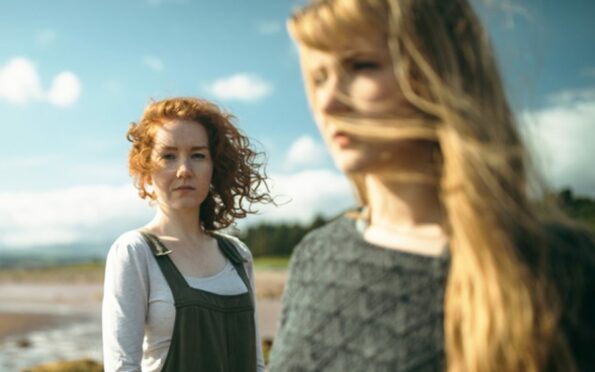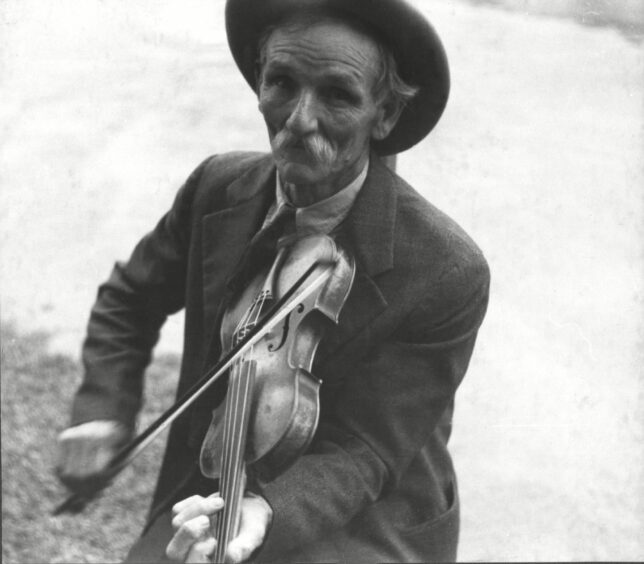
They travelled lightly, but among the sparse belongings of the pioneers in search of a new life across the Atlantic was a suitcase full of songs.
As they left the hills of Scotland for the Appalachian mountains of the new country, the ballads carried by the travellers told the story not only of their journey, but of those from generations past and, in time, generations to come.
According to the co-creator of a new Scottish musical that uses those songs to tell the narrative of several generations of women across the centuries, utilising the music in this format is entirely fitting.
Award-winning composer Finn Anderson, who has co-written A Mother’s Song: A New Folk Musical with Tania Azevedo, said: “There’s a tendency to think a musical has to be showbusiness, a light-hearted thing, but what’s so exciting about this project is what we’re drawing on; in a way, Scotland’s version of musical theatre is the ballads, telling stories in a dramatic way and about characters who have epic dilemmas.
“We’re pulling together the traditions of Scottish ballads with musical theatre traditions in a way that feels more Scottish and less Broadway but is still a full-scale musical.
“I’m really happy to be based in Scotland making musical theatre – there are not many of us doing that here. I think we’re still trying to figure out what Scottish musical theatre looks like and I think it can look and sound and feel like anything. It’s great that people in Scotland are starting to embrace that art form. I’m definitely a champion for there being more Scottish musicals.”
Anderson, who grew up in a music-loving family in the East Neuk of Fife, will tour the United States later this year with a previous Scottish musical he wrote called Islander, which has already been performed off-Broadway. Other Scottish musicals that have come out in recent years include Sunshine On Leith and the adaptation of the Peter Mullan film, Orphans. “Audiences can also begin to expect it,” said Azevedo, who is originally from Portugal. “The more Scottish musicals there are, the more Scottish audiences will want more original material, and hopefully that is a cyclical generator.”
The music used in A Mother’s Song is mostly original, in the spirit of the folk ballads of centuries past, but does also include some of the old songs that have travelled continents, spanned centuries and morphed and grown along with their respective generations.
Anderson continued: “There’s a well of ballads that exist in Scotland and Appalachia which sound very different in each of those places, so it was about researching the migration and these songs that we know exist in both. The story has been inspired by the songs, so the characters’ journeys in the show draw from the dilemmas in the ballads, as well as some of the language and imagery found in the songs.
“One of the interesting ways we use the songs is to show them being sung at different times in history, and how they might have helped someone process something in the 1600s and again in the modern day, and how a song has a different resonance with people going through different issues.
“Some of the traditional songs in the show include Four Marys, sometimes known as Mary Mild; Handsome Molly, which might also be known as Loving Hannah or The Roving Of Her Eye; Let No Man Steal Your Thyme, which is also known as Keep Your Garden Clean; and Say Darlin’ Say, an Appalachian ballad which contains the lyrics ‘Hush little baby, don’t you cry’, which a lot of people know as a poem but not as the song.
“Most of the material is new songs we’ve written and it’s about keeping the spirit, but also acknowledging the traditions are living, breathing, evolving, changing things.
“We embrace the traditions of Scotland, Ulster and Appalachia but we’re telling a new story with them. We use a lot of the elemental, natural language which occurs in the ballads, but the music feels more contemporary.”
A Mother’s Song, which receives its world premiere in Stirling this month, is a story spanning 400 years, from 17th-Century Stirling to 21st Century New York City, told from the perspective of Sarah in modern-day Brooklyn. Sarah comes from a long line of Scots-Irish ballad singers in the Appalachian Mountains, but she has severed ties with her family and folk traditions and is ready to start afresh with her girlfriend Alix in New York.
But as she’s moving into her new apartment, she finds a box left to her by her Aunt Betty, containing research of the family’s ballad-singing traditions and the stories of female relatives who came before them, causing Sarah to make life-changing decisions impacted by what she discovers.
The cast – Olivier Award nominee Kirsty Findlay, Bethany Tennick, Melanie Bell, Blythe Jandoo, Tinashe Warikandwa and Craig Hunter – are joined by an all-female band. An EP of the show’s new music has already been released.
A Mother’s Song: A Folk Musical, Macrobert Arts Centre, Stirling, starts on February 23

Enjoy the convenience of having The Sunday Post delivered as a digital ePaper straight to your smartphone, tablet or computer.
Subscribe for only £5.49 a month and enjoy all the benefits of the printed paper as a digital replica.
Subscribe © Everett/Shutterstock
© Everett/Shutterstock